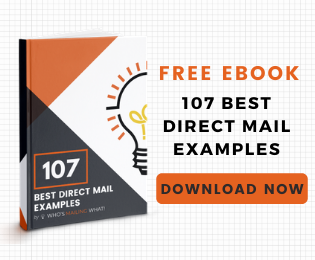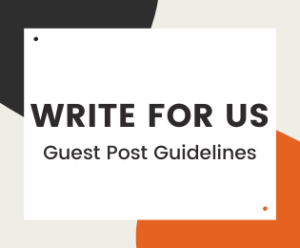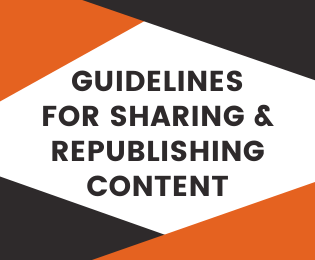HOW-TOS
How to Design a Top-Performing Direct Mail Template?
To create a top-performing direct mail campaign requires learning from others to avoid investing serious cash for trial and error testing.
Direct mail marketers are constantly trying to find a surefire way to know which campaigns work and which have less-than-stellar results. We often begin our campaigns based on a gut feeling about what we know works and what doesn’t. However, the reality is that we would do much better if we had some sort of measurement for identifying what has worked previously.
One way of doing this is to search for controls. By control we mean a direct mail campaign that performs well over time, month after month. Even better are grand controls, which are campaigns that have been demonstrated to perform consistently year after year.
Of course, we need to start somewhere, so typically we will try and create a template for our campaigns, and then try many different changes. We try different offers, different designs, maybe make tweaks using A/B testing, and eventually wind up with something that works.
Unfortunately, this can be an expensive process, reserved for organizations with the largest budgets. The good news is that, Who’s Mailing What! provides shortcuts to make it a lot easier to understand what has worked for others so that we can learn from their research. Who’s Mailing What! provides insights into what has made existing campaigns work. This should help you design a high-performing direct mail template strategy that will produce the greatest return on your advertising investment.
1. Define Your Goal…What Is Your Measurement of Success?
Before you even begin creating your campaign, an important first step is to define what success looks like. What are your goals? Are you trying to find new leads? Are you attempting to increase sales of a specific item? Are you trying to get new members to sign up for your service? Is this a pitch to existing customers or is it an attempt to get new ones? Be as specific as possible. This will help guide you as you design your campaign.
For demonstration purposes, let’s build a sample campaign. We’ll assume we have a company named Acme Gardening. This company provides landscaping services, including lawn mowing, landscape grooming, and gardening pest control. The goal of our direct mail campaign will be to attract new customers. We are willing to provide an introductory discount to new customers with the hope that they will eventually become regulars with our landscaping business.
2. Search For Existing Campaigns
With our idea in mind, we will use WMW! to find others who have run similar campaigns. As a general rule, If something has been done before and has been successful, as we mentioned earlier, there’s no reason we should reinvent the wheel. We can look at several past campaigns to see what has worked for other companies so as to avoid the expense of trial and error.
WMW! enables you to search through past campaigns that other companies have run, many of whom may be directly within your niche. If you are not already a member, you can sign up for a free trial membership here.
One of the best ways of determining whether or not an existing campaign has been successful is if it has been run more than once. You can safely assume that companies only tend to re-run the exact campaign if it has returned positive results in the past. WMW! has identified these types of campaigns with “controls” and “grand controls” indicators.
As we discussed in our introduction, “controls” are campaigns that have been used more than once with repeated success, typically over several months. If you are looking for the highest performing campaigns, you can examine “grand controls” which are those which have been running for several years and therefore likely have continually generated a successful return.
To filter your search for controls and grand controls, simply choose these options from the Direct Mail Filters section:
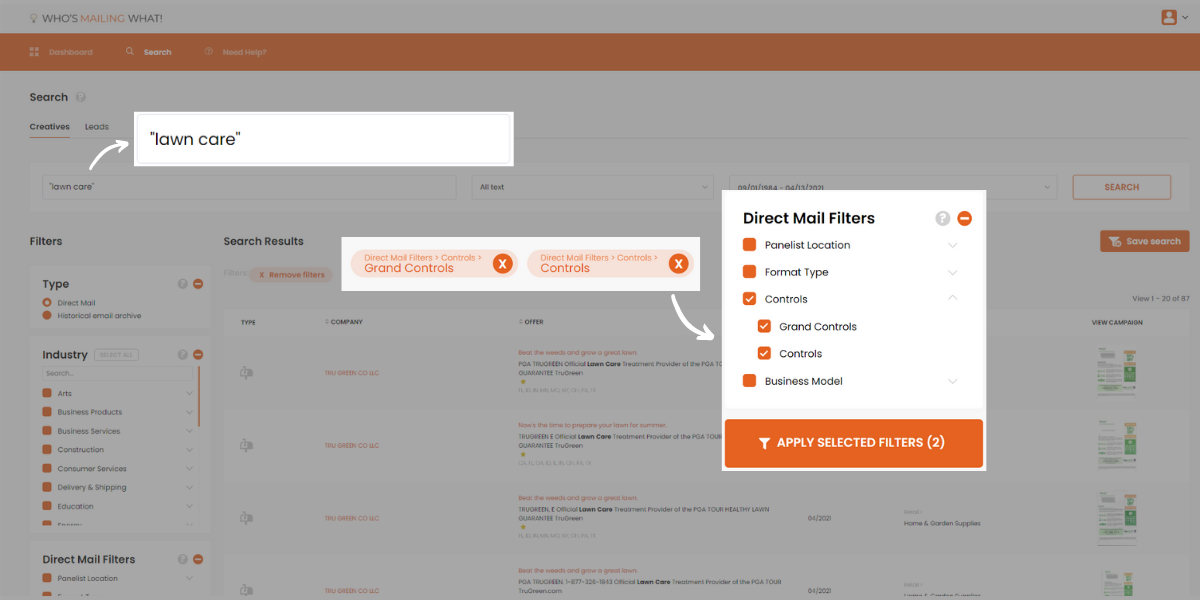
Let’s try this for our sample campaign.
The first step we would take would be to search in WMW! for “lawn care.” We want to narrow our search to proven campaigns. Choose both “controls” and “grand controls” to make sure we are only looking at long-running campaigns that have likely generated the greatest amount of success.
Here is the example search:

We can note that we have returned 6 pages of results, most of which look relevant to our purposes.
3. Identify Which Format Performs Best For Your Industry
Take a look at those that are closest to the services you offer. Identify the formats these organizations are using. Are they using postcards, a common format for Every Door Direct Mail, letters, or direct mail flyers? While postcards are the most economical, direct mail postcards are not always the best performing format for every industry. We can see that for landscape services (which are relatively straightforward), postcards do appear to perform best, but if you search in industries such as credit card offers, you will find that sales letters perform significantly better.
4. Filter for Your Specific Industry
Another method for identifying controls and grand controls is to search by industry. In our case, since we are a gardening company, we’ll focus on “Home & Garden Supplies.”
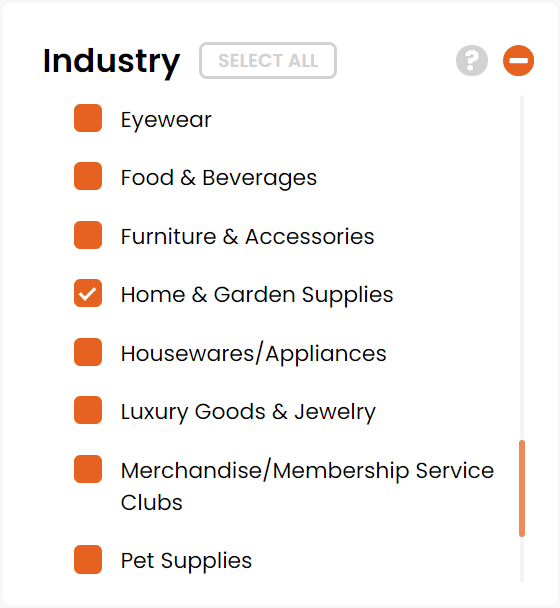
Who’s Mailing What! classifies organizations in 20 major industry categories and 85 sub-categories.
5. Track Competitors by Looking Up Specific Organizations
If you have found a few companies that have run and rerun campaigns that have been successful, you can follow these companies to see what sort of new advertising and marketing materials they are sending over time.
You can learn a lot by examining company pages.
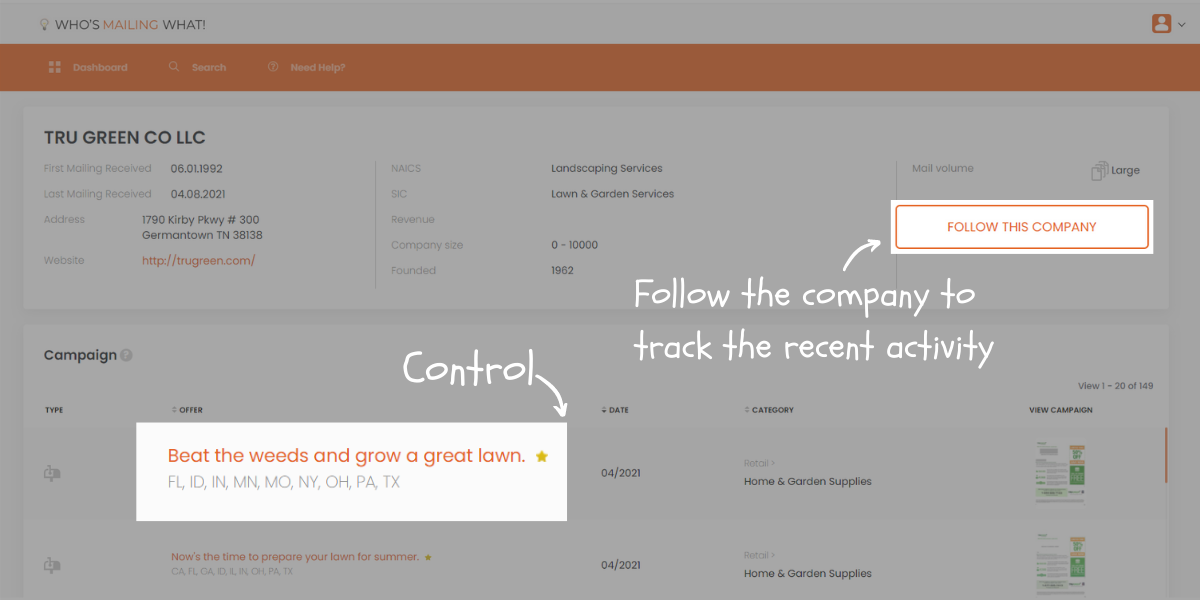
You may notice a few campaigns with controls and/or grand controls that may be interspersed with several other standalone campaigns that do not have controls. In some cases, you may be able to infer that these campaigns were tests that were not successful, however, this may not always be the case. It may be that they are running contests or sweepstakes which only run for a certain amount of time. It may be useful to see whether these events have been run on any type of regular schedule. If there is a variation in a campaign that has been run in the past (e.g., seasonal sweepstakes), it might be worth paying attention to the content in these mailings. Pay close attention to the time of year when direct campaigns have been run.
Another thing that may jump out at you is a campaign that had no controls that were followed by a similar one that shows as a control. This suggests that this is a template that a company has tested and modified until it became successful.
If there are standalone campaigns that ran only once, and nothing similar has been run again, these are also worth examining. These may have been campaigns that returned poor results. You can learn from others’ mistakes and save money by not repeating them by closely examining these non-performing tests. This is where a service like Who’s Mailing What! is most useful…to help you learn from what others have done and to save marketing budget dollars by not repeating the failed tests of others.
Which Creative Elements Are Important?
Offer
The two most important components of any successful direct mail campaign are the audience and the offer. Your audience needs to be selected carefully to make sure the recipients of your campaign are most likely to be receptive to your offer. If you need advice on who to send your campaign to, Who’s Mailing What! has several experienced partners providing targeted mailing lists. If you would like an introduction, please let us know.
Next, we need to understand how to select an offer that performs well. The most reliable approach is to mimic top-performing offers from other campaigns in your industry. The most experienced marketers build a personal “swipe file” of the best performing offers in their industry, which is easy to do with your membership to Who’s Mailing What!
Mailer Design
What sort of mailer design should you use? Do large and bold graphics work better, or is it better to use a stealth mailer approach, making your mailings look like important documents? Or will the oversized coupons perform better, as Bed Bath & Beyond has used to great success?
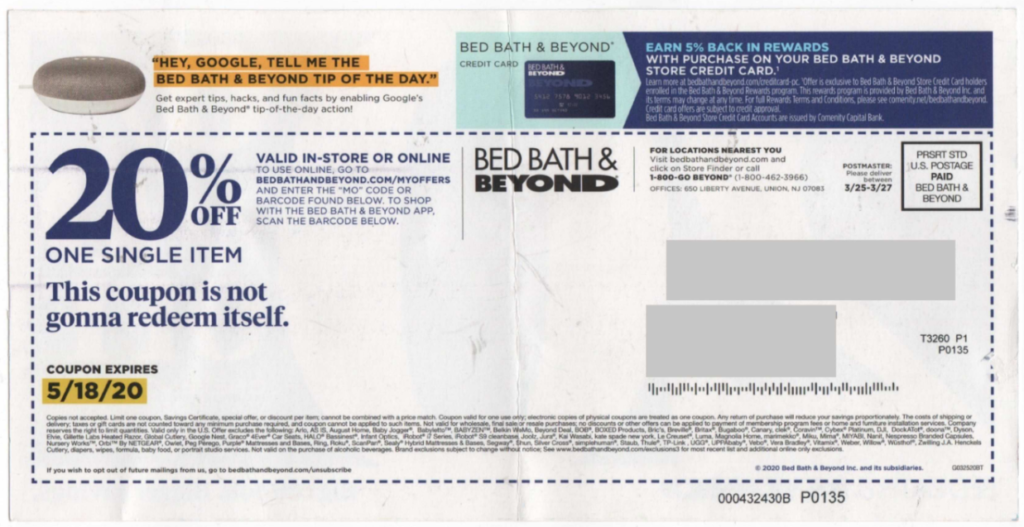
Of course, this kind of approach won’t work for every type of industry or product. Coupons may be excellent for moving specific products, but you will get the best result by reviewing what works best in your industry.
Images
What images are returning the best results? Is there a common use of images of people in your industry? Is it better to use an image of a female or a male? If people are not being pictured at all, that is something you should also take seriously. Do you see a common trend in mailings that are controls in your industry? Is there a common graphic design that you see among the top-performing direct mail campaigns? Again, remember the controls are invaluable to help you determine which types of images are getting the best response. Compare these with campaigns that do not have controls.
Language
What sort of copy do you want to include in your mailings? Calls to action are important. Is a fear-based approach more effective, or does greed-based copy deliver a higher response (more often, a positive message is better, but it depends on your industry)
Let’s come back to our lawn care example. You could write “Prevent your grass from dying!”, or you could write “How to have the greenest lawn in your neighborhood?” Which is likely to be more effective? Again you will want to examine controls in your industry. See what has been used with success.
Personalization
If you have data about your target readers, it can be effective to include a sentence or reference to the person’s name. You may want to consider this in your addressing as well, and whether you want to address your mailings to “occupant” or a known recipient. Most modern printing companies offer personalization at little or no extra cost.
Now that we have this in mind, let’s go back to our original search and look at a few examples that others have run on lawn care.
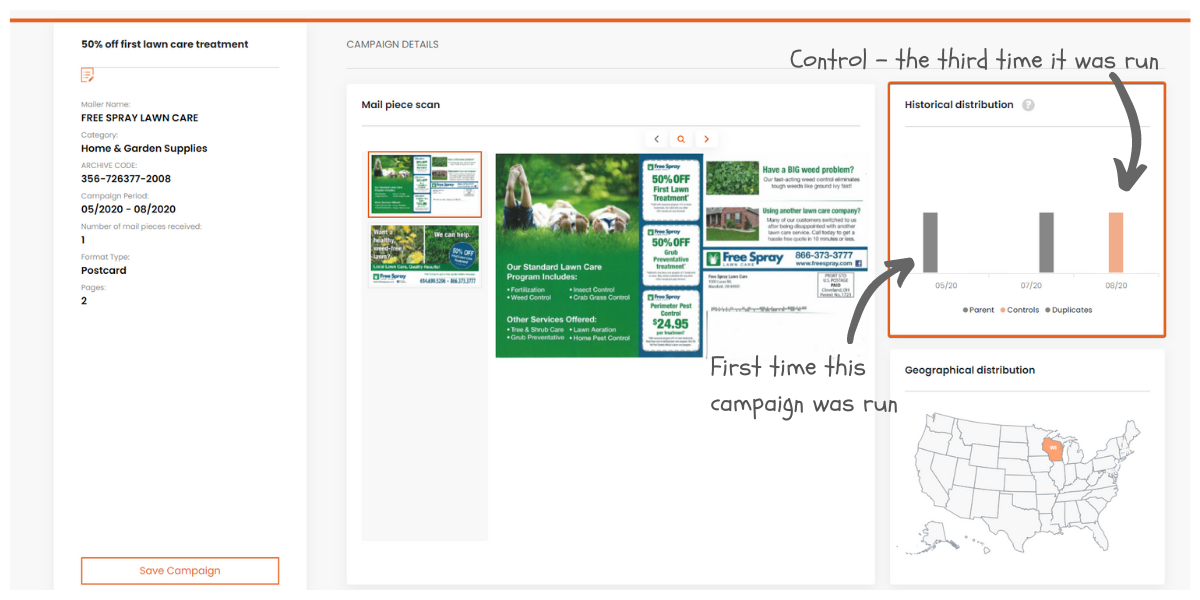
In this particular mailing we can notice several things, but first, let’s look at the metadata we are provided.
On the left, we can see the name of the mailer (“Free Lawn Spray Care”), and the period when it ran (5/2020-8/2020). On the far right of the screen, we can see that it was delivered at least three times. It shows the “parent”, or the first time it was run, any duplicates, and the “control” which is the third time. We can infer from this that the initial mailings showed some level of success. We can also see that this ad was delivered in Wisconsin.
Looking at the mailing itself, there are a few things that stand out. It has a green photographic background, some white bold text, and a few easy-to-read coupons on the right offering various services.
Now let’s look at another campaign from a different company.
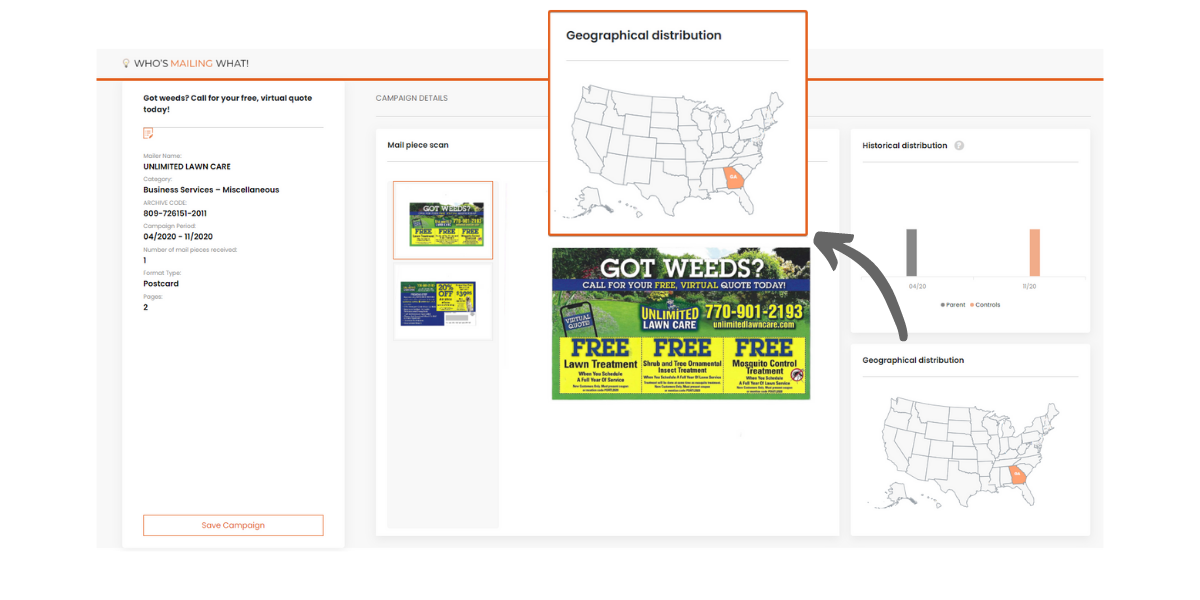
Right away we can see some similarities between these two campaigns. Both are using postcards. This ad, much like the other one, uses a green photograph as a background, white text, clear contact information, and several coupons.
It’s also worth noting that while this campaign was run in an entirely different state (Georgia, in this case), it uses a similar format. It was run twice, suggesting that it was successful the first time. We can note that the time difference is a little greater in this one; it was run in April, and then in November.
Let’s look at one more campaign to see if there is any variation.

This ad was run in Texas but shows some similarities to the other two ads. It still shows a green lawn (this is a common theme), and clear white text. While this advertisement does not show a coupon, it does show a clearly defined offer prominently within the page. This mailing, like the others, was sent more than once.
The only real difference in this ad is the use of red, which is designed to get attention (if you would like to learn more, look up AIDA as an effective copywriting framework), and to trigger a response from the user. Another interesting feature of this ad is the use of a QR code to enable users to go directly to a website using their smartphones. This is a nice feature that can help in tracking the responsiveness of the campaign.
Localization
Sometimes regional campaigns can be more successful if you have customized a message to those who live, for example, in a specific state. You may wish to localize your messaging to reference local interests or even using a local dialect.
If you are trying to target a specific market area, limited by geographical location, you can further narrow down your search to identify campaigns that have run in these particular areas.
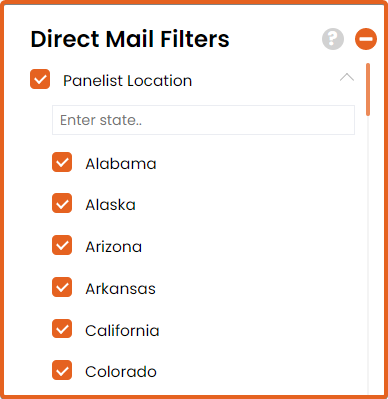
However, as we have noticed doing a broad search, there’s not that much variation in style for different regions for lawn care; the only real difference that we notice is the seasons these have been sent.
Building Our Campaign
At this point, you can get a general idea of what has worked in the past.
So for our campaign, what we want to do is to find a good quality photographic image of a lawn, and create a clear offer. In our case, we have decided that we want to provide potential customers with an incentive to try our services. As we have seen in other successful control campaigns, coupons, or special offers are commonly used in controls. We have decided to use a coupon including 50% off for a first visit.
We need to have a clear call to action; in our case, it will be a limited-time offer. We know that this call to action (in this case, the coupons) should be prominently displayed. We also like the idea of using a QR code, so we’ve decided to include one here as well since we can see successful mailings that have used them.
Here is a sample template likely to work for us:
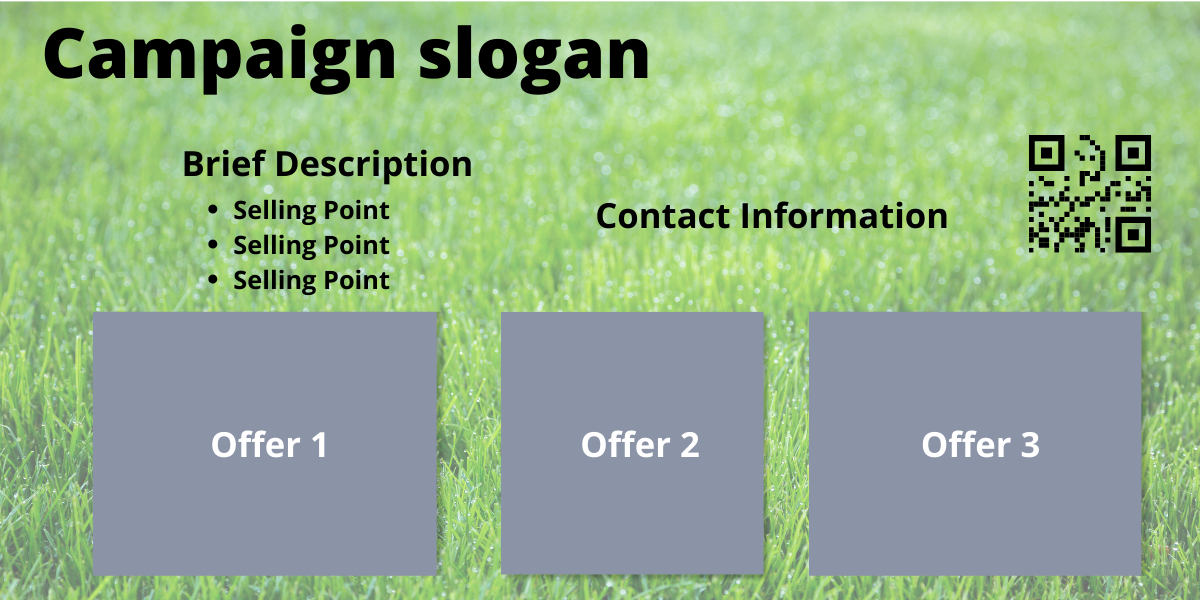
When Should You Send Your Mail Advertising?
Beyond examining individual companies, you can view larger trends that are common within your business category. You can identify during which periods the volume of mailings increases or decreases. This can be done by customizing your Industry Trends widget to see whether there are higher or lower volumes during specific times of the year.
You can use this information to help you make decisions on when it is a good time to send a mailer. If there is a drop-off for certain industries at certain times, it is very likely you can expect a lower response during such periods. And, during peak times, you can usually expect the greatest response.
In this example, we chose to narrow these trends to consumer services, and also to retail:
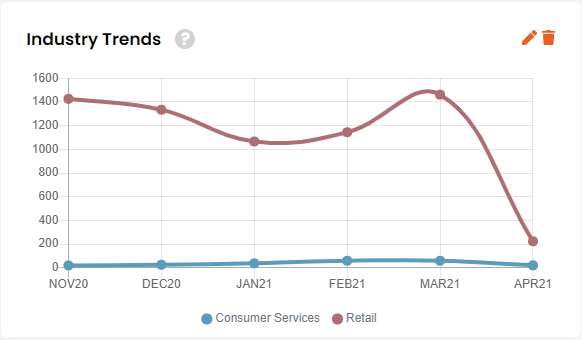
We can see that for retail, there’s a strong regular cycle of mailings going out fairly steadily over time. For consumer services, we see a couple of things. First of all, we can see that there is much less competition in the mailbox, suggesting that there may be an opportunity here. However, there also may be a reason why these campaigns have not been run during these times. Remember our controls; we can learn a lot from what others have done before us. Be aware of this, but don’t be afraid to experiment.
Learn From Others’ Experiences
At WMW!, we regularly deliver useful tidbits of information and insights you can apply to your direct mail campaigns and to help you identify which creative elements to include in your templates. We have written a useful collection of tips that will help you build a good advertising mailer template you can use as an effective direct mail design.
Conclusion
To create a top-performing direct mail campaign requires learning from others if you want to avoid investing serious cash for trial and error testing. By researching what is working for others, you can maximize your likelihood of success. Smart marketers use tools like Adbeat and WhatRunsWhere for digital ad research and Who’s Mailing What! for direct mail advertising competitive intelligence. Do you have any more questions? Please feel free to contact us to speak to an expert.

























